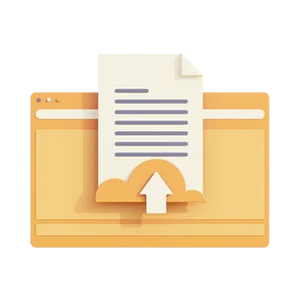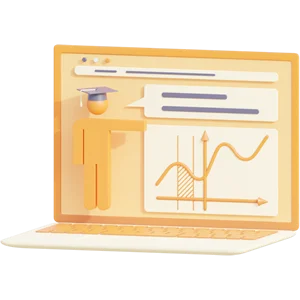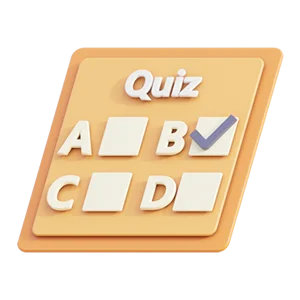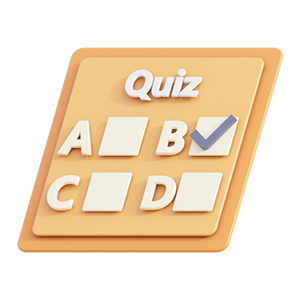HESI MED SURG REAL LATEST EXAM 2024-2025 WITH 70+ QUESTIONS AND CORRECT ANSWERS ALREADY GRADED A+ [LATEST VESION 2024]
HESI MED SURG REAL LATEST EXAM
2024-2025 WITH 70+ QUESTIONS AND
CORRECT ANSWERS ALREADY
GRADED A+ [LATEST VESION 2024]
The nurse evaluates that discharge teaching for a patient hospitalized with
pneumonia has been most effective when the patient states which of the
following measures to prevent a relapse?
A. "I will increase my food intake to 2400 calories a day to keep my immune
system well."
B. "I must use home oxygen therapy for 3 months and then will have a
chest x-ray to reevaluate."
C. "I will seek immediate medical treatment for any upper respiratory
infections."
D. "I should continue to do deep-breathing and coughing exercises for at
least 6 weeks." - ANSWER-D. "I should continue to do deep-breathing and
coughing exercises for at least 6 weeks." It is important for the patient to
continue with coughing and deep breathing exercises for 6 to 8 weeks until
all of the infection has cleared from the lungs. A patient should seek
medical treatment for upper respiratory infections that persist for more than
7 days. Increased fluid intake, not caloric intake, is required to liquefy
secretions. Home O2 is not a requirement unless the patient's oxygenation
saturation is below normal.
After admitting a patient to the medical unit with a diagnosis of pneumonia,
the nurse will verify that which of the following physician orders have been
completed before administering a dose of cefotetan (Cefotan ) to the
patient?
A. Serum laboratory studies ordered for AM
B. Pulmonary function evaluation
C. Orthostatic blood pressures
D. Sputum culture and sensitivity - ANSWER-D. Sputum culture and
sensitivity. The nurse should ensure that the sputum for culture and
sensitivity was sent to the laboratory before administering the cefotetan. It
is important that the organisms are correctly identified (by the culture)
before their numbers are affected by the antibiotic; the test will also
determine whether the proper antibiotic has been ordered (sensitivity
testing). Although antibiotic administration should not be unduly delayed
while waiting for the patient to expectorate sputum, all of the other options
will not be affected by the administration of antibiotics.
Which of the following nursing interventions is most appropriate to enhance
oxygenation in a patient with unilateral malignant lung disease?
A. Positioning patient on right side.
B. Maintaining adequate fluid intake
C. Performing postural drainage every 4 hours
D. Positioning patient with "good lung down" - ANSWER-D. Positioning
patient with "good lung down" Therapeutic positioning identifies the best
position for the patient assuring stable oxygenation status. Research
indicates that positioning the patient with the unaffected lung (good lung)
dependent best promotes oxygenation in patients with unilateral lung
disease. For bilateral lung disease, the right lung down has best ventilation
and perfusion. Increasing fluid intake and performing postural drainage will
facilitate airway clearance, but positioning is most appropriate to enhance
oxygenation.
A 71-year-old patient is admitted with acute respiratory distress related to
co pulmonale. Which of the following nursing interventions is most
appropriate during admission of this patient?
A. Delay any physical assessment of the patient and review with the family
the patient's history of respiratory problems. B. Perform a comprehensive
health history with the patient to review prior respiratory problems.
C. Perform a physical assessment of the respiratory system and ask
specific questions related to this episode of respiratory distress.
D. Complete a full physical examination to determine the effect of the
respiratory distress on other body functions. - ANSWER-C. Perform a
physical assessment of the respiratory system and ask specific questions
related to this episode of respiratory distress. Because the patient is having
respiratory difficulty, the nurse should ask specific questions about this
episode and perform a physical assessment of this system. Further history
taking and physical examination of other body systems can proceed once
the patient's acute respiratory distress is being managed.
A nurse is preparing to establish oxygen therapy for a patient with COPD,
and the physician's prescription reads "oxygen per nasal cannula at 5 L per
minute." Which of the following actions should the nurse take?
A. Administer the oxygen as prescribed. B. Call the physician and question
the correct flow rate of the oxygen.
C. Establish the oxygen as prescribed and obtain an ABG.
D. Change the delivery device from a nasal cannula to a simple oxygen
mask. - ANSWER-B. Call the physician and question the correct flow rate
of the oxygen. The nurse should call the physician immediately and
question the flow rate for delivery of the oxygen before implementation.
Oxygen is used cautiously in patients with COPD because of longstanding
hypoxemia serving as the respiratory drive mechanism. If high levels of
oxygen are administered, the respiratory drive can be obliterated. Changing
the device to a simple oxygen mask may alter the oxygen concentration
being delivered to the patient and will further enhance the obliteration of the
patient's respiratory drive. Obtaining an ABG sample is not a priority at this
time, and the action does not address the validity of the prescribed oxygen
dosing for the patient.
A 75-year-old obese patient who is snoring loudly and having periods of
apnea several times each night is most likely experiencing
A. narcolepsy.
B. sleep apnea.
C. sleep deprivation.
D. paroxysmal nocturnal dyspnea. - ANSWER-B. sleep apnea. Sleep
apnea is most common in obese patients. Typical symptoms include
snoring and periods of apnea. Narcolepsy is when a patient falls asleep
unexpectedly. Sleep deprivation could result from sleep apnea. Paroxysmal
nocturnal dyspnea occurs when a patient has shortness of breath during
the night.
The nurse evaluates that discharge teaching for a patient hospitalized with
pneumonia has been most effective when the patient states which of the
following measures to prevent a relapse?
A. "I will increase my food intake to 2400 calories a day to keep my immune
system well."
B. "I must use home oxygen therapy for 3 months and then will have a
chest x-ray to reevaluate."
C. "I will seek immediate medical treatment for any upper respiratory
infections."
D. "I should continue to do deep-breathing and coughing exercises for at
least 6 weeks." - ANSWER-D. "I should continue to do deep-breathing and
coughing exercises for at least 6 weeks." It is important for the patient to
continue with coughing and deep breathing exercises for 6 to 8 weeks until
all of the infection has cleared from the lungs. A patient should seek
medical treatment for upper respiratory infections that persist for more than
7 days. Increased fluid intake, not caloric intake, is required to liquefy
secretions. Home O2 is not a requirement unless the patient's oxygenation
saturation is below normal.
After admitting a patient to the medical unit with a diagnosis of pneumonia,
the nurse will verify that which of the following physician orders have been
completed before administering a dose of cefotetan (Cefotan ) to the
patient?
A. Serum laboratory studies ordered for AM
B. Pulmonary function evaluation
C. Orthostatic blood pressures
D. Sputum culture and sensitivity - ANSWER-D. Sputum culture and
sensitivity. The nurse should ensure that the sputum for culture and
sensitivity was sent to the laboratory before administering the cefotetan. It
is important that the organisms are correctly identified (by the culture)
before their numbers are affected by the antibiotic; the test will also
determine whether the proper antibiotic has been ordered (sensitivity
testing). Although antibiotic administration should not be unduly delayed
while waiting for the patient to expectorate sputum, all of the other options
will not be affected by the administration of antibiotics.
Which of the following nursing interventions is most appropriate to enhance
oxygenation in a patient with unilateral malignant lung disease?
A. Positioning patient on right side.
B. Maintaining adequate fluid intake
C. Performing postural drainage every 4 hours
D. Positioning patient with "good lung down" - ANSWER-D. Positioning
patient with "good lung down" Therapeutic positioning identifies the best
position for the patient assuring stable oxygenation status. Research
indicates that positioning the patient with the unaffected lung (good lung)
dependent best promotes oxygenation in patients with unilateral lung
disease. For bilateral lung disease, the right lung down has best ventilation
and perfusion. Increasing fluid intake and performing postural drainage will
facilitate airway clearance, but positioning is most appropriate to enhance
oxygenation.
A 71-year-old patient is admitted with acute respiratory distress related to
co pulmonale. Which of the following nursing interventions is most
appropriate during admission of this patient?
A. Delay any physical assessment of the patient and review with the family
the patient's history of respiratory problems. B. Perform a comprehensive
health history with the patient to review prior respiratory problems.
C. Perform a physical assessment of the respiratory system and ask
specific questions related to this episode of respiratory distress.
D. Complete a full physical examination to determine the effect of the
respiratory distress on other body functions. - ANSWER-C. Perform a
physical assessment of the respiratory system and ask specific questions
related to this episode of respiratory distress. Because the patient is having
respiratory difficulty, the nurse should ask specific questions about this
episode and perform a physical assessment of this system. Further history
taking and physical examination of other body systems can proceed once
the patient's acute respiratory distress is being managed.
A nurse is preparing to establish oxygen therapy for a patient with COPD,
and the physician's prescription reads "oxygen per nasal cannula at 5 L per
minute." Which of the following actions should the nurse take?
A. Administer the oxygen as prescribed. B. Call the physician and question
the correct flow rate of the oxygen.
C. Establish the oxygen as prescribed and obtain an ABG.
D. Change the delivery device from a nasal cannula to a simple oxygen
mask. - ANSWER-B. Call the physician and question the correct flow rate
of the oxygen. The nurse should call the physician immediately and
question the flow rate for delivery of the oxygen before implementation.
Oxygen is used cautiously in patients with COPD because of longstanding
hypoxemia serving as the respiratory drive mechanism. If high levels of
oxygen are administered, the respiratory drive can be obliterated. Changing
the device to a simple oxygen mask may alter the oxygen concentration
being delivered to the patient and will further enhance the obliteration of the
patient's respiratory drive. Obtaining an ABG sample is not a priority at this
time, and the action does not address the validity of the prescribed oxygen
dosing for the patient.
A 75-year-old obese patient who is snoring loudly and having periods of
apnea several times each night is most likely experiencing
A. narcolepsy.
B. sleep apnea.
C. sleep deprivation.
D. paroxysmal nocturnal dyspnea. - ANSWER-B. sleep apnea. Sleep
apnea is most common in obese patients. Typical symptoms include
snoring and periods of apnea. Narcolepsy is when a patient falls asleep
unexpectedly. Sleep deprivation could result from sleep apnea. Paroxysmal
nocturnal dyspnea occurs when a patient has shortness of breath during
the night.
Preview document (3 van de 67 pagina's)
Voordelen van Knoowy
€ 24,99
 Niet tevreden? Geld terug
Niet tevreden? Geld terug
 Document direct te downloaden
Document direct te downloaden
 € 0,50 korting bij betalen met saldo
€ 0,50 korting bij betalen met saldo
-
 Ontvang gratis oefenvragen bij document
Ontvang gratis oefenvragen bij document

Specificaties
- School: Chamberlain College Of Nursing
- Opleiding: NURSING
- Studiejaar: 2024
Document
- Rubriek: Tentamens
- Gemaakt op: 02-08-2024
- Type: .pdf
- Pagina's: 67
- Taal: English
Tags
Verkoper
Verdienen aan je samenvattingen?
Vakken van NURSING - Chamberlain College Of Nursing
Meer NURSING ›ati ati pharmacology comprehensive comprehensive predictor health care health care / nursing health care/ nursing healthcare hesi hesi rn exit maternal newborn med surg medical nursing medical surgical mental health nurs nursing nursing & health nutrition pathophysiology pediatrics pharmacology psychology test bank tncc
Al meer dan 146.000 tevreden studenten
-
JadeVanBignoot
Knoowy is zeker aan te raden. Goedkoop en je krijgt meteen je document!
-
Steffix
Knoowy neemt toch wel wat stress voor de examenperiode weg. De samenvattingen geven een goede houvast bij het studeren waardoor je zekerder wordt van jezelf bij het studeren. Ideaal voor wie in tijdsnood zit of gewoon een extra overzicht wil hebben van het vak.
-
larbi
Een goede keuze voor samenvattingen. Je bespaart tijd en energie.
-
iljanijenhuis
Het is een fijne en uitgebreide website met helpende documenten en samenvattingen!
-
febeh
Betrouwbare website. Helpt me goed bij het studeren en herhalen.
-
FranCeulemans
Handige bron om samenvattingen te vinden, vorige beoordelingen helpen hier zeker bij!
-
FleurYasmine
Het is heel fijn om via Knoowy extra ondersteuning te hebben bij het studeren door middel van samenvattingen van de lesstof.
-
JadeVanBignoot
Knoowy is zeker aan te raden. Het is goedkoper dan andere platforms.
 Actie: ontvang 10% korting bij aankoop van 3 of meer items!
Actie: ontvang 10% korting bij aankoop van 3 of meer items!
Actie: ontvang 10% korting bij aankoop van 3 of meer items!









